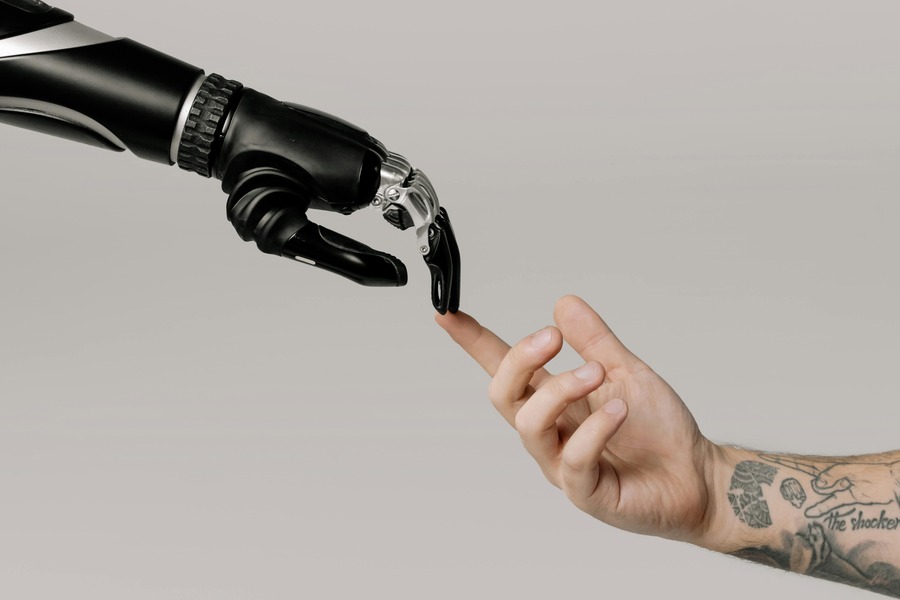Quantum Computers vs. Crypto: The Upcoming Challenges

Quantum Computing and Crypto: Preparing for the Post-Quantum Era
The dawn of practical quantum computing promises breakthroughs in science and computation, but it also casts a long shadow over modern cryptography, including the cryptographic foundations securing the multi-trillion dollar cryptocurrency market. While today's blockchains like Bitcoin and Ethereum are secure against classical computers, the unique capabilities of quantum machines pose a future threat that requires proactive attention and a transition to new cryptographic standards. This article explores the potential impact of quantum computing on crypto, the likely timelines, the development of quantum-resistant solutions, and the steps needed to ensure the long-term security of the Blockchain ecosystem.
Quantum Computing vs. Classical Cryptography: A Paradigm Shift
The Quantum Advantage
Classical computers use bits (0s or 1s) to process information sequentially. Quantum computers utilize qubits, which leverage quantum mechanical principles like superposition and entanglement. This allows qubits to represent multiple states simultaneously (both 0 and 1, and states in between) and work together in complex ways, enabling exponential speedups for specific types of calculations.
Crypto's Achilles' Heel: Public-Key Cryptography
Modern cryptocurrency security relies heavily on public-key cryptography (PKC). Algorithms like ECDSA (Elliptic Curve Digital Signature Algorithm), used extensively by Bitcoin, Ethereum, and many other cryptocurrencies for generating wallet addresses and signing transactions, are based on mathematical problems (like the Elliptic Curve Discrete Logarithm Problem) considered practically impossible for classical computers to solve in reverse. That is, it's easy to generate a public key from a private key, but infeasible to derive the private key from the public key.
However, Peter Shor's quantum algorithm (Shor's Algorithm), developed in 1994, provides an efficient method for quantum computers to solve these underlying mathematical problems (including integer factorization which breaks RSA, another common PKC algorithm). A sufficiently powerful, fault-tolerant quantum computer running Shor's algorithm could potentially derive a user's private key from their publicly known public key, allowing an attacker to steal funds or forge transactions.
While hash functions like SHA-256 (used in Bitcoin mining and address hashing) are considered more resistant to quantum attacks, Grover's Algorithm offers a quadratic speedup for searching, potentially requiring the use of larger hash outputs or other adjustments in the future to maintain the same security level.

The Quantum Timeline: When is the Threat Real?
Current Quantum Capabilities (Mid-2025)
Despite rapid progress, quantum computing is still in its relative infancy. Today's quantum processors have hundreds of qubits (e.g., Google's ~105-qubit Willow chip) but suffer from high error rates ("noise") and lack the scale and fault tolerance required to break strong cryptography like 256-bit ECDSA. Experts estimate that breaking ECDSA within a practical timeframe (e.g., hours) would require a quantum computer with millions of stable, error-corrected ("logical") qubits. Achieving this capability is widely believed to be at least a decade away, potentially much longer (2035-2040s or beyond), though the exact timeline is uncertain and depends on overcoming significant scientific and engineering hurdles.
The Immediate Danger: "Harvest Now, Decrypt Later" (HNDL)
While breaking keys in real-time seems distant, a more immediate threat exists: Harvest Now, Decrypt Later (HNDL). Adversaries, particularly nation-states, can record encrypted data transmitted today – including blockchain transactions that reveal public keys – and store it. Once capable quantum computers are available, they can retroactively decrypt this stored data. This means data or transactions secured with vulnerable cryptography today could be compromised in the future, adding urgency to the need for quantum-resistant solutions, especially for data requiring long-term confidentiality.
The Need for Proactive Transition
Migrating the entire global digital infrastructure, including blockchain networks, wallets, and exchanges, to new cryptographic standards is a complex and lengthy process, likely taking many years. Waiting until quantum computers pose an imminent threat would be too late. Therefore, research, standardization, and planning for migration must happen proactively.
The Solution: Post-Quantum Cryptography (PQC)
Post-Quantum Cryptography (PQC) refers to cryptographic algorithms designed to be secure against attacks from both classical and quantum computers. Unlike traditional PKC, PQC relies on different mathematical problems thought to be hard for even quantum computers to solve efficiently.
PQC Approaches
Common families of PQC algorithms include:
- Lattice-based cryptography: Relies on the difficulty of problems involving geometric lattices.
- Code-based cryptography: Based on error-correcting codes.
- Multivariate cryptography: Uses systems of multivariate polynomial equations.
- Hash-based signatures: Leverages the security of cryptographic hash functions.
NIST Standardization Efforts
The U.S. National Institute of Standards and Technology (NIST) is leading a global effort to select and standardize PQC algorithms. As of early 2025:
- Finalized Standards (Published Aug 2024):
- ML-KEM (CRYSTALS-Kyber): The primary standard for public-key encryption and key establishment (FIPS 203).
- ML-DSA (CRYSTALS-Dilithium): The primary standard for digital signatures (FIPS 204).
- SLH-DSA (SPHINCS+): A hash-based signature standard (FIPS 205), notable for its different security assumptions compared to lattice-based methods.
- Ongoing Standardization (as of Mar 2025):
- HQC (Hamming Quasi-Cyclic): Selected as an alternative KEM standard (code-based), final standard expected around 2027.
- FALCON: A lattice-based signature algorithm, draft standard (FIPS 206) expected soon.
These NIST standards provide a crucial foundation for industries, including crypto, to begin migrating towards quantum-resistant security. However, implementing PQC may involve trade-offs, such as potentially larger key sizes, signature sizes, or different performance characteristics compared to current algorithms.
Impact and Implications for the Crypto World
The Geopolitical "Quantum Race"
The development of powerful quantum computers is a matter of national security and economic competitiveness. A nation achieving a significant quantum advantage first could potentially compromise global communications and financial systems, including cryptocurrencies, creating geopolitical instability.
Ecosystem Upgrade Challenges
Coordinating cryptographic upgrades across decentralized blockchain networks is inherently complex. Achieving consensus among developers, miners/validators, exchanges, wallet providers, and users takes time and effort. Different projects may adopt PQC at different paces or choose different algorithms initially.
Regulatory Landscape
As quantum threats become more tangible, regulators worldwide will likely increase scrutiny. We may see mandates for PQC compliance, especially for regulated entities like exchanges and custodians handling crypto assets. NIST has already proposed timelines to phase out classical algorithms like ECDSA by the mid-2030s, adding pressure for migration.
Preparing the Crypto Ecosystem: Actionable Steps
A collective effort is needed to ensure a smooth transition to a post-quantum future:
- Blockchain Developers & Projects: Must actively research and test PQC algorithms (especially the finalized NIST standards). Planning secure and efficient upgrade paths (potentially via hard or soft forks) is crucial. Some projects, like Quantum Resistant Ledger (QRL) or IOTA, have focused on quantum resistance from early on, while others like Ethereum are researching future upgrades.
- Wallets & Exchanges: Need to integrate support for PQC key generation, storage, and transaction signing. Developing user-friendly migration tools and clear communication plans will be essential for guiding users through the transition. See guides on How To Store Crypto and Understanding Crypto Exchanges.
- Users & Investors: Stay informed about quantum computing developments and PQC adoption. Investigate the PQC roadmap of projects you invest in (Do Your Own Research (DYOR)). Be prepared to migrate your assets to PQC-secured wallets or addresses when reliable tools and guidance become available.
Beyond Defense: Quantum Opportunities
While the focus is often on the threat, quantum technologies may also offer benefits:
- Cryptographic Innovation: The push for PQC is stimulating research into new cryptographic techniques that could offer advantages beyond quantum resistance, potentially improving privacy or efficiency.
- Quantum Randomness: Quantum phenomena can generate true random numbers, which could be used via Quantum Random Number Generators (QRNGs) to create even stronger cryptographic keys in the future.

Conclusion: Building a Quantum-Resilient Future
Quantum computing represents a long-term, fundamental challenge to the cryptographic security underpinning today's digital world, including cryptocurrencies. While the timeline for large-scale quantum attacks capable of breaking current keys remains uncertain and likely distant, the "Harvest Now, Decrypt Later" threat and the lengthy process required for migration necessitate immediate attention and action.
The development and standardization of Post-Quantum Cryptography (PQC), led by efforts like NIST's, provide the necessary tools. The cryptocurrency community – developers, infrastructure providers, and users – must now embrace the transition proactively. Through research, collaboration, careful planning, and education, the blockchain ecosystem can navigate the quantum transition, ensuring the continued security, integrity, and trustworthiness of digital assets well into the future. This evolution is not just about defense; it's about demonstrating the resilience and adaptability inherent in decentralized technology. Explore more about what lies ahead in The Future of Crypto.





